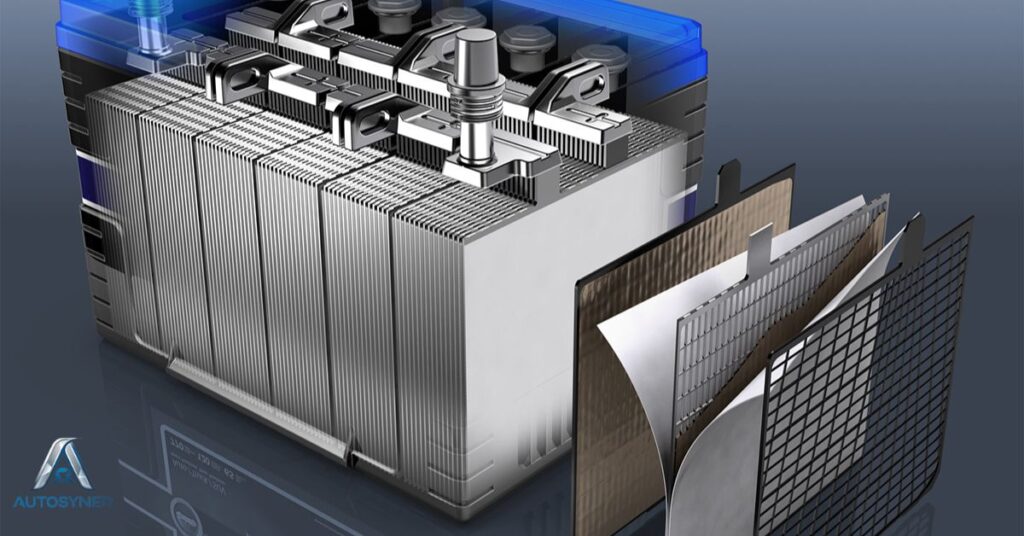Automotive batteries belong to Hazard Class 8, designated for corrosive substances. Understanding their classification is vital for ensuring safe handling and disposal practices, given their potential environmental and health risks.
With the power to ignite engines and illuminate roadways, automotive batteries seem innocuous. However, lurking beneath their utilitarian facade lays a hazardous classification.
Automotive batteries fall under Hazard Class 8, reserved for corrosive substances. This classification underscores the potential dangers posed by these seemingly mundane components, prompting a deeper exploration into their handling and disposal protocols.
Understanding their hazard classification unveils the need for stringent safety measures in the automotive industry.
Automotive Batteries Are in Which Hazard Class?
Automotive batteries are typically classified under Hazard Class 8, which is designated for corrosive substances.

The Two Main Battery Types
Primary Batteries: Also known as non-rechargeable batteries, primary batteries are designed for single use. Once they have been depleted of their chemical energy, they cannot be recharged and must be replaced.
Secondary Batteries: Secondary batteries, often referred to as rechargeable batteries, can be recharged and reused multiple times by reversing the chemical reactions that occur during discharge. Examples include lithium-ion batteries, lead-acid batteries, and nickel-metal hydride batteries.
The Basic Steps to Shipping Automotive Batteries
The basic steps to shipping automotive batteries typically involve.
Packaging Compliance: Ensure that the batteries are properly packaged according to regulatory requirements, including packaging materials, labeling, and documentation.
Carrier Selection: Choose a shipping carrier that is authorized to transport hazardous materials, and verify their specific requirements for shipping automotive batteries.
Documentation: Complete all necessary shipping documentation, including hazardous materials shipping papers, manifests, and any required permits or licenses.
Labeling and Marking: Properly label and mark the packages containing automotive batteries with the appropriate hazardous materials labels and markings as per regulations.
Training: Ensure that personnel involved in handling and shipping the batteries are properly trained on the safe handling procedures and emergency response protocols.
Compliance Check: Conduct a final compliance check to ensure that all regulatory requirements for shipping automotive batteries are met before dispatching the shipment.
Monitoring and Tracking: Monitor the shipment throughout transit and track its progress to ensure timely delivery and compliance with regulations.
Recipient Notification: Notify the recipient of the shipment’s arrival and provide any necessary instructions for safe handling and storage upon receipt.
Recordkeeping: Maintain accurate records of the shipping process, including documentation, training records, and any incidents or deviations encountered during transit.
Disposal or Recycling: Properly dispose of or recycle automotive batteries that have reached the end of their useful life, following applicable regulations and guidelines.
Defining Automotive Batteries
Automotive batteries are compact yet powerful electrochemical devices essential for powering vehicles. Typically made of lead-acid or lithium-ion cells, they provide the necessary electrical energy to start engines, operate lights, and support various electrical systems.

Rechargeable in nature, these batteries play a pivotal role in maintaining vehicle functionality and are vital for smooth operation on the road.
Regulatory Framework for Hazardous Materials
The regulatory framework for hazardous materials encompasses a set of laws, regulations, and guidelines established by government agencies to ensure the safe handling, transportation, storage, and disposal of substances that pose a risk to health, safety, or the environment.
Read This Blog:https://autosyner.com/toyota-corolla-wont-start-heres-quick-solutions-to-the-most-common-causes/
These regulations typically include classification criteria, packaging requirements, labeling and marking standards, documentation procedures, and training mandates for personnel involved in handling hazardous materials.
Compliance with the regulatory framework is essential to mitigate potential risks and protect human health, the environment, and property from the adverse effects of hazardous materials.
Safety Considerations in Handling Automotive Batteries
Safety considerations in handling automotive batteries are paramount due to their potential hazards. Some key safety measures include.
Personal Protective Equipment (PPE): Always wear appropriate PPE such as gloves and safety goggles to protect against chemical exposure and physical injury.
Ventilation: Ensure proper ventilation in areas where batteries are handled to disperse any gases emitted during charging or discharging processes.
Avoid Sparks: Prevent sparks or flames near batteries, as they can ignite flammable gases emitted during charging or discharging.
Correct Lifting Techniques: Use proper lifting techniques to avoid back injuries when moving heavy batteries, and always handle them with care to prevent damage or leakage.
Secure Handling: Handle batteries carefully to avoid spills or drops, which could lead to acid exposure, electrical shocks, or damage to the battery casing.
Proper Charging: Follow manufacturer guidelines for charging batteries to prevent overcharging, which can lead to overheating, swelling, or leakage of electrolyte.
Also Read This Blog:https://autosyner.com/chevrolet-silver-ado-wont-start-top-14-causes-solutions/
Storage: Store batteries in a cool, dry, and well-ventilated area away from direct sunlight and sources of heat to prevent overheating or thermal runaway.
Emergency Preparedness: Have appropriate spill containment and first aid supplies readily available in case of accidents, and ensure personnel are trained in emergency response procedures.
By adhering to these safety considerations, the risks associated with handling automotive batteries can be minimized, promoting a safer working environment for personnel and reducing the likelihood of accidents or injuries.
Environmental Impacts of Automotive Batteries
The environmental impacts of automotive batteries are multifaceted and include several key considerations:
Resource Extraction: The production of automotive batteries requires the extraction of raw materials such as lithium, cobalt, and nickel, which can lead to habitat destruction, water pollution, and ecosystem degradation in mining areas.
Greenhouse Gas Emissions: The manufacturing process of automotive batteries, particularly lithium-ion batteries, often involves energy-intensive processes that emit greenhouse gases, contributing to climate change.

Battery Disposal: Improper disposal of automotive batteries can lead to environmental pollution and health hazards due to the release of toxic chemicals such as lead, sulfuric acid, and heavy metals into soil and water bodies.
Waste Management: End-of-life automotive batteries pose challenges for proper disposal and recycling. Without adequate recycling infrastructure, batteries may end up in landfills, where they can leach harmful substances into the environment over time.
Energy Storage: While automotive batteries enable the transition to electric vehicles (EVs), the increased demand for energy storage solutions poses challenges for sustainable battery production, recycling, and disposal practices.
Lifecycle Analysis: Conducting comprehensive lifecycle analyses of automotive batteries can help assess their overall environmental impacts, from raw material extraction to end-of-life disposal, and inform strategies for mitigating these impacts.
Addressing the environmental impacts of automotive batteries requires a holistic approach that encompasses sustainable battery manufacturing, efficient recycling programs, and responsible end-of-life management practices.
By prioritizing environmental considerations throughout the lifecycle of automotive batteries, stakeholders can work towards minimizing their ecological footprint and promoting a more sustainable transportation infrastructure.
FAQ’S
How often should I replace my car battery?
Car batteries typically last 3 to 5 years, but factors like weather conditions and usage patterns can affect their lifespan. Monitor for signs of deterioration, such as difficulty starting the engine or dimming lights.
Can I jump-start my car if the battery dies?
Yes, you can jump-start your car using jumper cables and another vehicle with a charged battery. Follow the correct procedure outlined in your vehicle’s manual to avoid damaging the electrical system.
What should I do with my old car battery?
Old car batteries should be recycled properly to prevent environmental harm. Many automotive stores and recycling centers accept used batteries for recycling, ensuring safe disposal of hazardous materials.
How do I know if my car’s alternator or battery is the issue?
If your car struggles to start even after a jump-start or if the battery keeps draining quickly, it could indicate a problem with the alternator. Consult a mechanic for a diagnostic check to determine the root cause.
Can extreme temperatures damage my car battery?
Yes, extreme temperatures, both hot and cold, can impact battery performance and lifespan. Extreme heat can cause fluid evaporation, while extreme cold can reduce battery capacity and make starting the engine more difficult.
What maintenance should I perform on my car battery?
Regular maintenance includes keeping the battery terminals clean and tight, checking electrolyte levels (for non-sealed batteries), and ensuring proper charging with a functional alternator. Regular inspections can help prevent unexpected failures.
Conclusion
Automotive batteries are essential components of modern vehicles, providing the electrical power necessary for various systems to function efficiently. It’s crucial to understand their maintenance requirements, disposal procedures, and environmental impacts to ensure safe and responsible usage.
By adhering to proper handling practices, recycling old batteries, and staying informed about advancements in battery technology, we can minimize risks, extend battery lifespan, and contribute to a more sustainable transportation ecosystem.
Whether it’s through routine maintenance or embracing emerging innovations, prioritizing the care and management of automotive batteries is vital for both vehicle performance and environmental stewardship.







